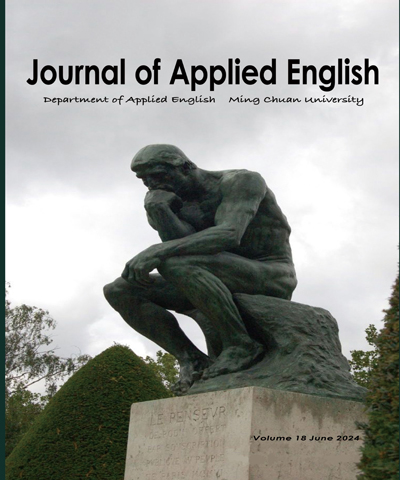
應用英語期刊/Journal of Applied English
銘傳大學應用英語學系所,正常發行
選擇卷期
- 期刊
This paper looks at four key issues concerning quality college English Language Teaching (ELT) in Taiwan. Although there are various factors to be considered such as teacher training, student motivation, cultural differences, etc., it is important for ELT policy makers, teachers, test designers and stakeholders to address issues beyond these concerns when the national college ELT education is taken into consideration. Strategically, quality college ELT education of a country is considerably related to the four key issues of 1) what is to be assessed, 2) a national curriculum, 3) a national testing system, and 4) a national scale of English language ability. Starting with the first issue, the writer argues that it is language performance rather than competence is to be assessed. It is still a question for some test designers, especially under the influence of Bachman's latest AUA (Assessment Use Argument, 2010) test model, to wonder whether they should focus on a testee's language ability or language performance. This paper argues that the notion of "language ability" in Bachman's AUA test model is psycholinguistic, and impractical. It could be a misunderstanding for people to wrongly use Bachman's psycholinguistic "language ability" to mean language performance. Foreign language test designers should have a clear understanding of what language ability truly means so as to focus on observable language performance rather than invisible psycholinguistic language competence. As for the other three key issues of a national curriculum, a national testing system, and a national scale of English language ability, they are three approaches to the best guarantee of quality college ELT education for a country. Any one or two of the three approaches could implement the effective safeguard for quality college ELT education. Looking around the world situation, we can see many countries, including the US, Canada, Mainland China, the European Union, Australia, etc. have established their own national or regional standards of foreign language education. In addition, this paper examines the college ELT education in Taiwan, and argues that, comparatively, there is a distinct lack of any of the three key issues concerning its college ELT education. Therefore, this paper calls on national ELT policy makers, teachers, test designers and stakeholders to be fully aware that quality college ELT education in Taiwan should actually be more related to the adoption of at least one of the three approaches.
- 期刊
Previous studies have shown that subtitles, including dual subtitles, have positive learning effects for L2 learners when viewing videos in the target language. Similarly, research has contended that instructional designs with multimodality functions can assist language learners in improving their learning. This study hereby aimed to investigate the effectiveness of an interactive annotation learning system (IALS), through which students could learn and review novel vocabulary in bilingual-subtitled videos. Learners in the treatment group who viewed a video with dual subtitles using the IALS were compared to learners in the control group watching the same video without the IALS. The results revealed that students who watched the videos with the IALS achieved significant gains in vocabulary knowledge compared to that of the control group. Furthermore, the technology acceptance model questionnaire showed that students not only perceived the IALS useful in enhancing their vocabulary learning but also found it engaging and user-friendly when viewing videos with dual subtitles. The findings from this study support that bilingual-subtitled videos with IALS strengthen learners' vocabulary learning and also create a positive learning experience for them.
- 期刊
In this article I will investigate the state of the rivers of Victorian London and how their neglect, via both a lack of understanding of the spread of contagion, and a lack of infrastructural investment, led to the proliferation of disease throughout the city. My aim is to show that the improvements in the treatment of London's water resources were an example of the exercising of government biopower. For many years government policies in relation to London sanitation were reactive, if they were present at all. Whether it be disagreements between sanitarians and doctors, or avaricious capitalists, London's water was routinely neglected. The Great Stink of 1858 provided the tipping point, after which the government finally took action. Using Foucault's idea of biopower I plan to show that the change in government policy in relation to London's waterways was an attempt to improve public health for the benefit of the rapidly expanding British economy, which was in the middle of the industrial revolution at the time. The construction of new infrastructure also had the ulterior effect of creating a socially segregated space by the Thames. This new public area was cleansed of not only physical dirt, but also of members of society who were deemed undesirable within that particular spatial context. The issue of London sanitation and the spread of illness in the city is no doubt a complicated one which involves more issues than simply water supply. However, this paper will focus only on the city's water supply in order to remain clear and concise.

